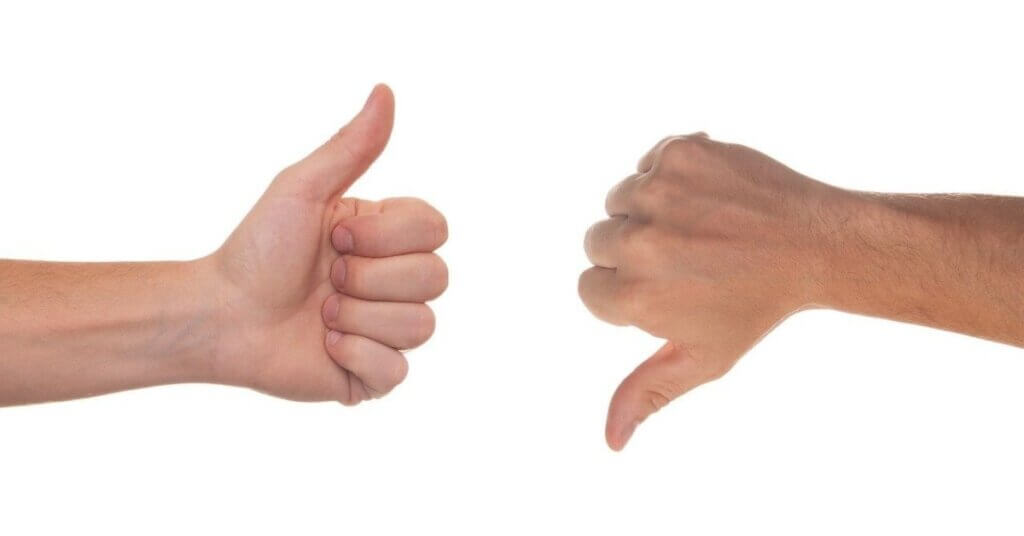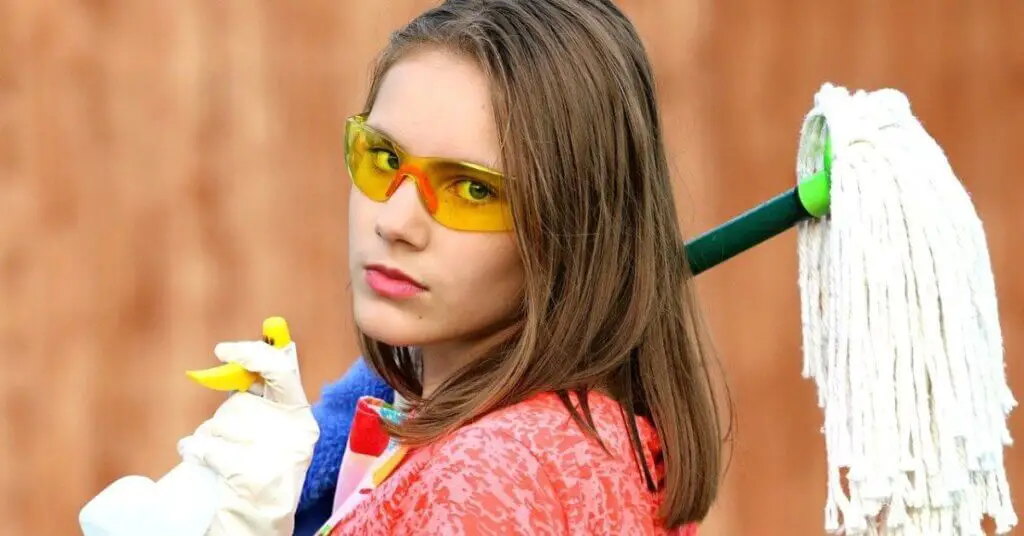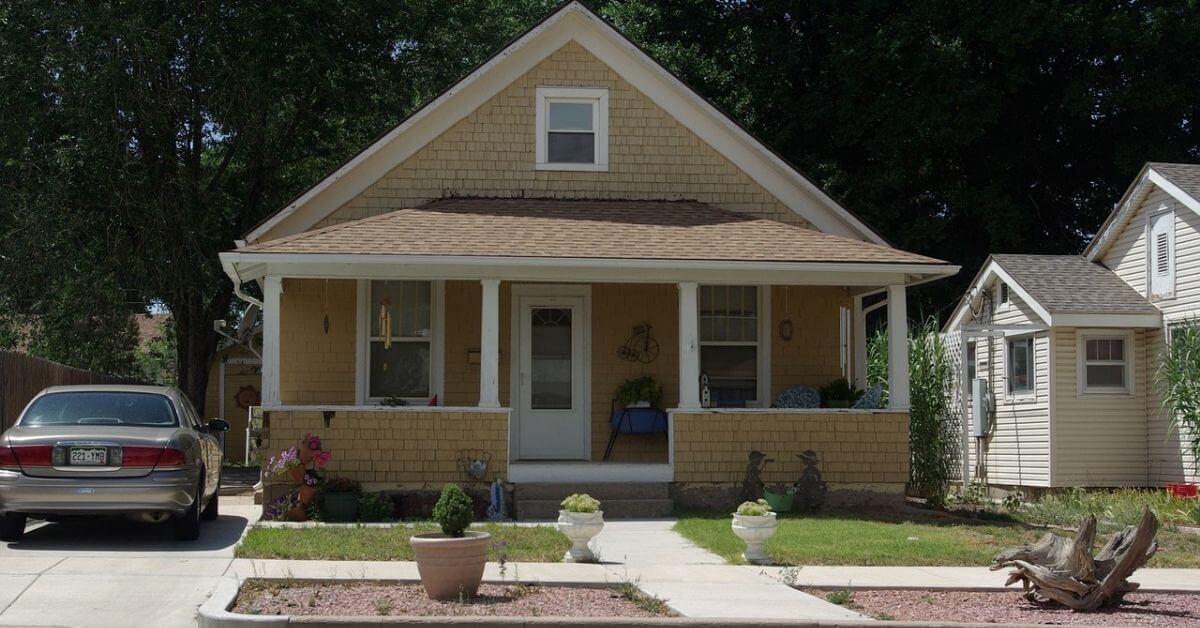What is Hardboard?
Hardboard is also known as high-density fiberboard (HDF). It is an engineered wood product, Hardboard is used extensively in home construction, siding, and furniture. It is made from a mixer of exploded wood fibers, resin, and glue, That has been highly compressed(about 65 pounds per cubic foot) at high heat.
According to Wikipedia, the density of a hardboard is 31 pounds per cubic foot (500 kg/m3). As you can guess, It is a strong material which is a suitable material for building construction. It is almost similar to MDF (Medium Density Fiberboard) but the hardboard is stronger and denser than MDF and plywood.
What is Hardboard Siding?
Hardboard has been used for siding since the 1980s to 1990s. It became famous for being cheap and easy to install. So it is a better-engineered material for siding and many owners like to use it. It is better in many ways than many other siding materials. But it also has some drawbacks.
Since it became famous, Many companies were continuously making poor-quality hardboards. Hence a case was filed against those companies in 1994. That’s why most companies have now stopped producing hardboard siding.
Since 1994, people have reduced the use of hardboards for siding. Still, some companies produce hardboards. Although most people still refer to it as Masonite. Its name may have been changed, but it still has many drawbacks.
Hope that companies will be able to remove the defects of hardboard siding soon. So that people can use it again without any problem.
Hardboard Siding Pros and Cons

Pros
Easy to paint
The surface of the hardboard siding material is rough. So that it easily holds the paint. Its surface is almost similar to wood (because overall it is made of wood) but there is no grain-like wood.
Easy to install
It holds nails and screws very well. So we can say that the workability of hardboard siding is great. It can be installed easily. However, due to its high density, it is not easy to cut it. But it is much easier than other materials.
Durability
Hardboard siding has great durability. Its lifespan can be around 30 to 40 years. If the siding is of good quality. Also, the durability of any construction material depends on the weather and maintenance.
Some manufacturers give a warranty of more than 25 years. Some companies claim to return double money if they are damaged. Before making the final deal, check the warranty and terms and conditions.
Cost
It is an inexpensive siding material. That’s why most people like it. If we compare it with vinyl siding then it is available at a higher cost. But cheaper than real wood, stone, and brick siding.
Type Of Siding Material With Price
| Types of siding material | Approx Cost Per Square Foot |
| Wood | $2 to $7 |
| Metal | $3 to $11 |
| Hardboard | $4 to $8 |
| Vinyl | $5 to $7 |
| Fiber Cement | $6 to $7 |
| Brick | $9 to $10 |
| Stone | $20 to $22 |
This price is an approximate price and may vary depending on your dealer and country’s location.
Hardboard Siding Material is about $4.00 to $8.00 per square foot. The installation cost of Hardboard Siding can range from $2.10 to $4.30. All these prices may change according to your city location.
Cons
Production has stopped
Now Hardboard siding is not being produced on a large scale. Due to some quality defect, many large companies had to stop their production. Because of this, it has had a great impact on usage.
Hardboard siding is not used in some states and also it is not available. That’s why hardboard siding may not be for you. Still, if you want to use it then it can be costly for you.
Absorb Water
One of the biggest problems with hardboard siding is that it absorbs moisture. It is also true, Hardboard does not absorb moisture quickly but when it does, it does not dry easily. After absorbing moisture, it changes its primary shape and size. Avoid using it in a place where it is raining continuously
Rotting and Softening
Wherever there is the presence of moisture, there is bound to be smelling and rotting. If they are not cleaned at the right time, then they slowly spoil the entire board. Hardboards tend to rot more quickly than vinyl and wood. Therefore, they require a lot of regular care. Read here wood siding pros and cons
How to Maintain Hardboard Siding?

Is it right for you?
According to the experts, Hardboard siding is not suitable for rainy areas. It needs a lot of care which may cost you. If you live in a rainy area, hardboard siding may be more expensive for you. If you want to use hardboard siding, then treated hardboard and best quality may be a better option for you.
Read the best wood for rainy weather.
Clean Regularly
No siding likes dust. The accumulated dust invites insects and rot. Due to dust, moisture remains on the siding surface for a long time, which gradually starts to rot.
Therefore leaves and dust should be cleaned regularly. This not only makes your seeding durable but also maintains its great beauty.
For cleaning, a medium-powered garden hose is suitable, avoiding the use of high-pressure nozzle spray. When it is slightly dirty, only ordinary water is sufficient. But you can use a cleaner and water mixer if more dirt accumulates.
Read how to save rotting decking.
Quick Repair
As soon as any rot or damage is detected, it should be repaired quickly. Otherwise, it will spread in a few days. If you cannot replace damaged boards the same day or the next day, just remove them. So that the rot does not reach other boards.
If you are changing any board, then make sure that all the nearby boards are healthy. Check for rot and clean it up.
Keep Moisture Away
Keep the soil and Plant Material Away from the Siding. Make a slop near the siding so that the rainwater can be easily removed. Make a proper solution for the water draining from the roof. Quickly fix any leaks.
Paint and Polish
Paint not only enhances the beauty of siding but also increases its durability. The paint acts as a protection layer between the siding and the exterior, protecting the siding from moisture and dust. Apply the paint every one or two years.

